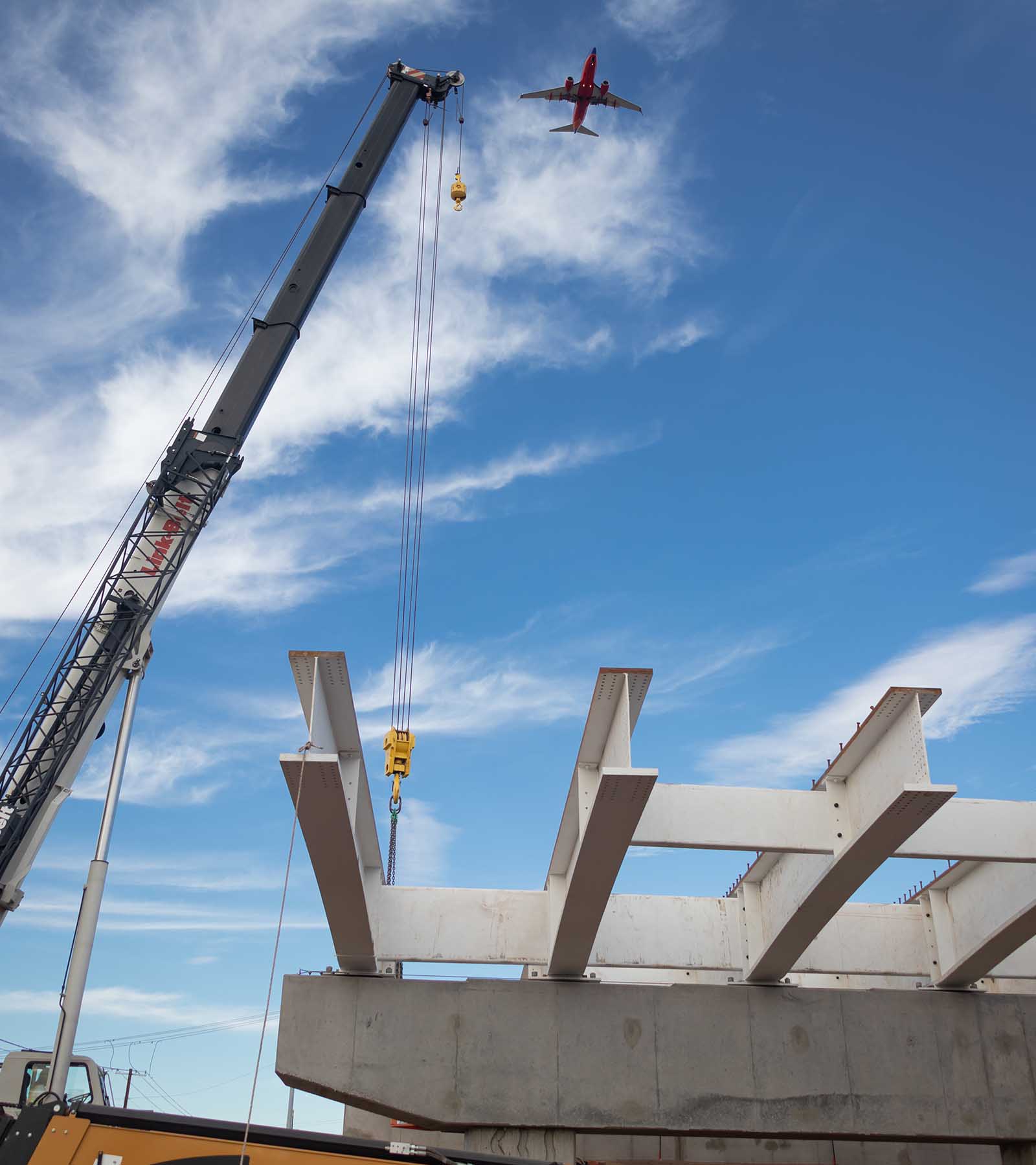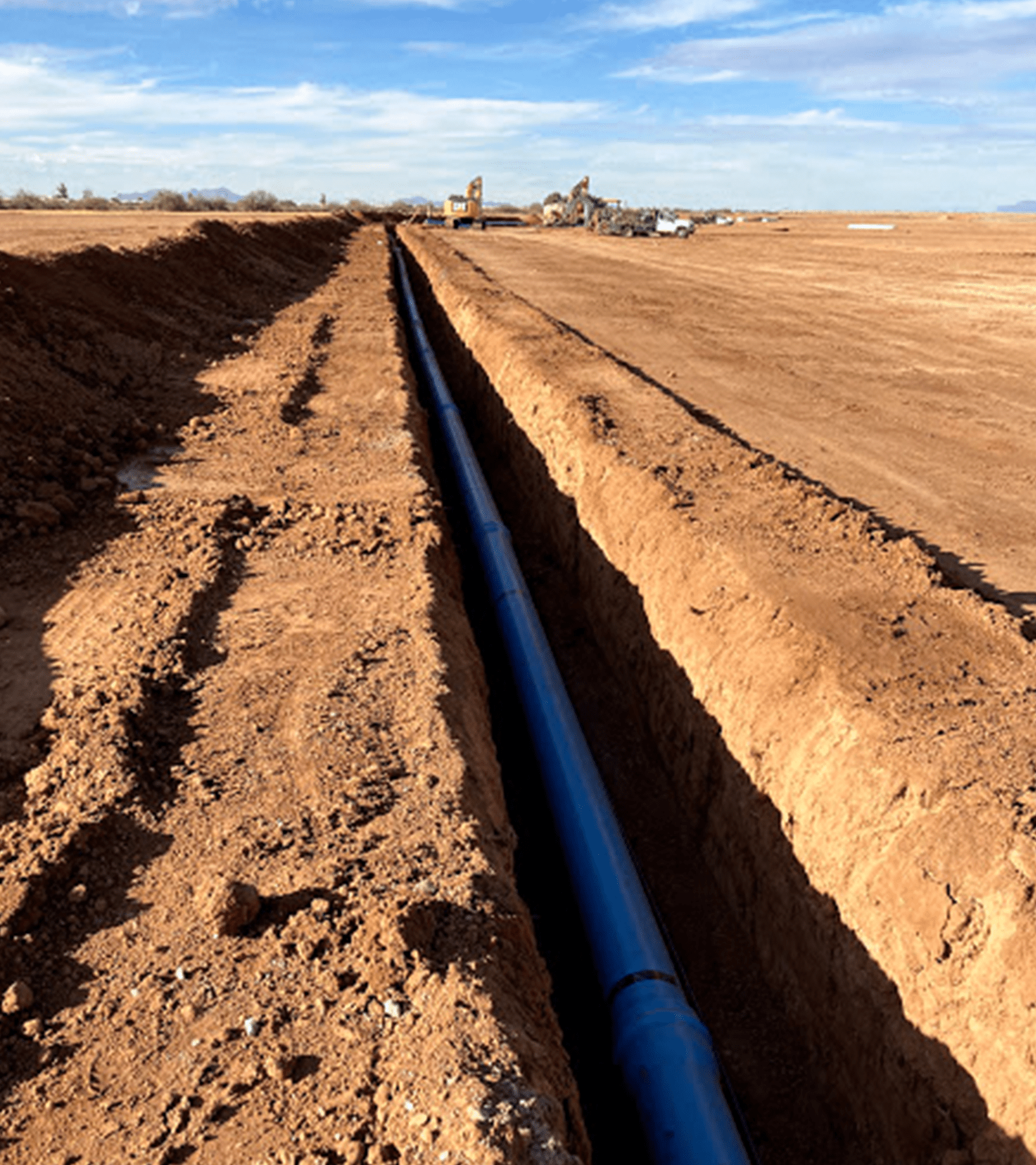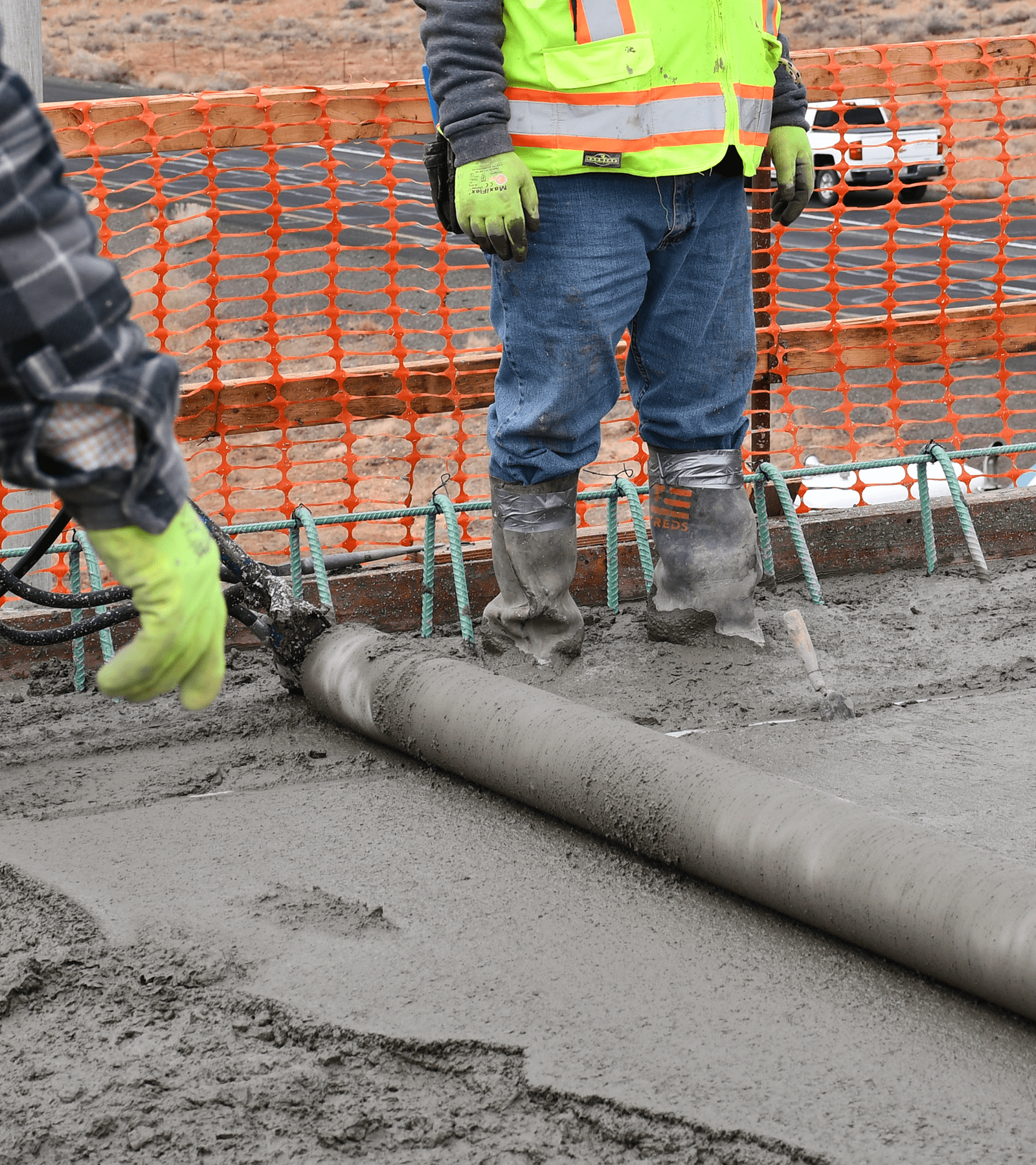The Challenge
The original Kelvin Bridge was in need of replacement. The four-span, single-lane Luten arch bridge was constructed in 1917 and no longer serviceable. In 1993, the bridge was nearly destroyed due to flooding. The project was a necessity to the residents of Kelvin, Riverside, and Kearny who depended on this crossing of the Gila River. Without this crossing, their travels would be greatly increased. The existing bridge also had an at grade crossing of the Copper Basin Railway. This railway serves the nearby ASARCO Ray mine. The future bridge would span over the railway, thus reducing safety concerns. The bridge is also a needed first step in providing a shorter more reliable route between SR 177 and SR 79, connecting Florence residents to Kearny, Superior, and Ray mine.
Pinal County first began their efforts to build the new bridge; capable of withstanding flooding, a sufficient load rating, and more reliable access for the residents nearly 20 years ago. They needed the participation of federal funding to achieve their goals. During the archaeological study, features were discovered that required excavation and mapping. Environmental challenges also played a part in prolonging the process. The bridge crosses the Gila River, designated as an impaired waterway, and the environmentally sensitive area surrounding the river which is a critical habitat for the southwestern willow flycatcher and yellow-billed cuckoo. Pinal County’s persistence and dedication to the project allowed construction to begin in the spring of 2017.
Excellence in Project Management
Our approach to project management excellence for this project encompassed the aspects of planning, schedule management, rephasing, stakeholder engagement, and public relations.
During construction of the bridge deck, a design error was discovered that created a superelevation in the pier cap at pier #4 instead of a crown. Our team worked together with ADOT and the designers to adjust the screed grades prior to the concrete deck placement to adjust the elevations and correct this from becoming a problem. Had this not been caught prior to the deck placement the schedule and cost impacts to demo and repair this problem would have severely delayed the project and caused it to overrun the budget.
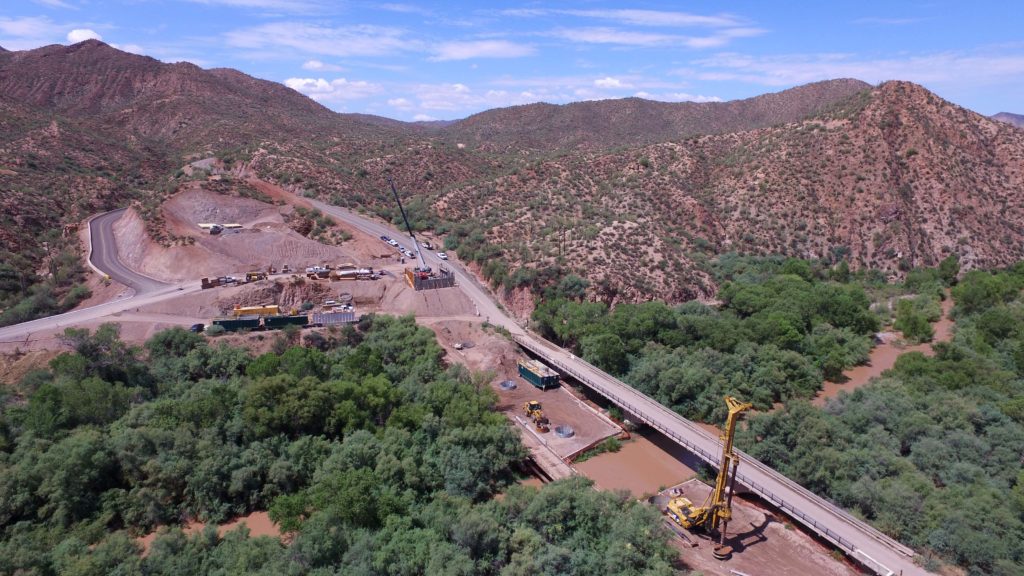
One of the critical planning aspects included temporary access design and construction for girder delivery, on-site erection, and concrete deliveries. This was accomplished with a limited work zone footprint and tight space constraints due to environmental NEPA requirements.
Schedule management became extremely important on this project after the original concrete bridge girder manufacture declared bankruptcy and went out of business. Our creative thinking managers and superintendents were able to revamp the schedule and keep the project moving forward despite this major setback. This was accomplished by re-phasing the work, setting girders in two phases, and accelerating the project closeout. These actions would not have been possible without the partnered efforts of the entire team including ADOT and Pinal County.
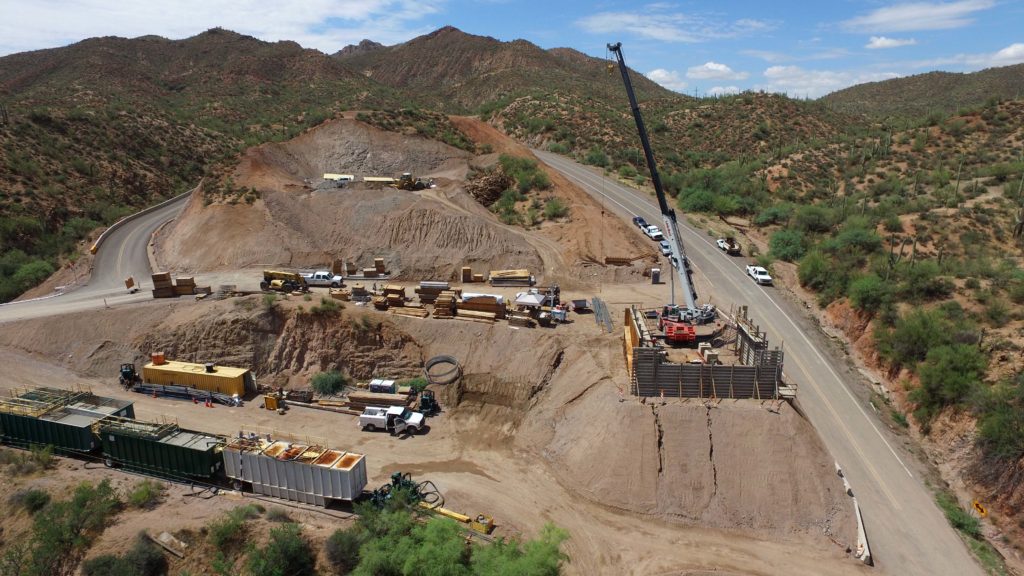
Construction Practices
Concrete mix designs for travel durations (hydration stabilizer) With the rural location of this project, one of the major concerns was concrete mixes and set times. The closest batch plant to the bridge location was in Coolidge Arizona, which is over an hour away from Kelvin Bridge. This is a large concrete project, which means not only are you accounting for batch time, drive time, but also stand-by time on site prior to pouring. Knowledge of these factors formed a necessity to look into innovative ideas to make sure that material was not compromised during the time it was being delivered to the job site. Pulice worked with Calportland and the designers to create a specialized mix-design using a formulated hydration stabilizer admixture to provide an added level of control over the concrete set times. The mix design developed for this project aided in controlling concrete set time enhanced overall strength and provided a suitable resolution to quality compliance.
Quality Coordination with all stakeholders throughout the course of a project is always a top priority for Pulice, but on this project Pulice took it a step further. Working as a tight knit group really helped secure the project team as a community and created a positive work environment. Between Pulice, Pinal County, ASARCO, and Copper Basin Railroad a collective effort was made to help each other out throughout the time together on site. Improvements were needed at the Pinal County Maintenance yard as well as driveways providing access to railroad tracks for Copper Basin. Pulice took initiative to coordinate and incorporate this work into their schedule to help out the project partners. Improvements were made to the existing waterlines, drainage and added drainage features, driveways, and roads surrounding the project. Pulice considers these enhancements part of a quality partnership that resulted in valued relationships built throughout the project and extending past completion.
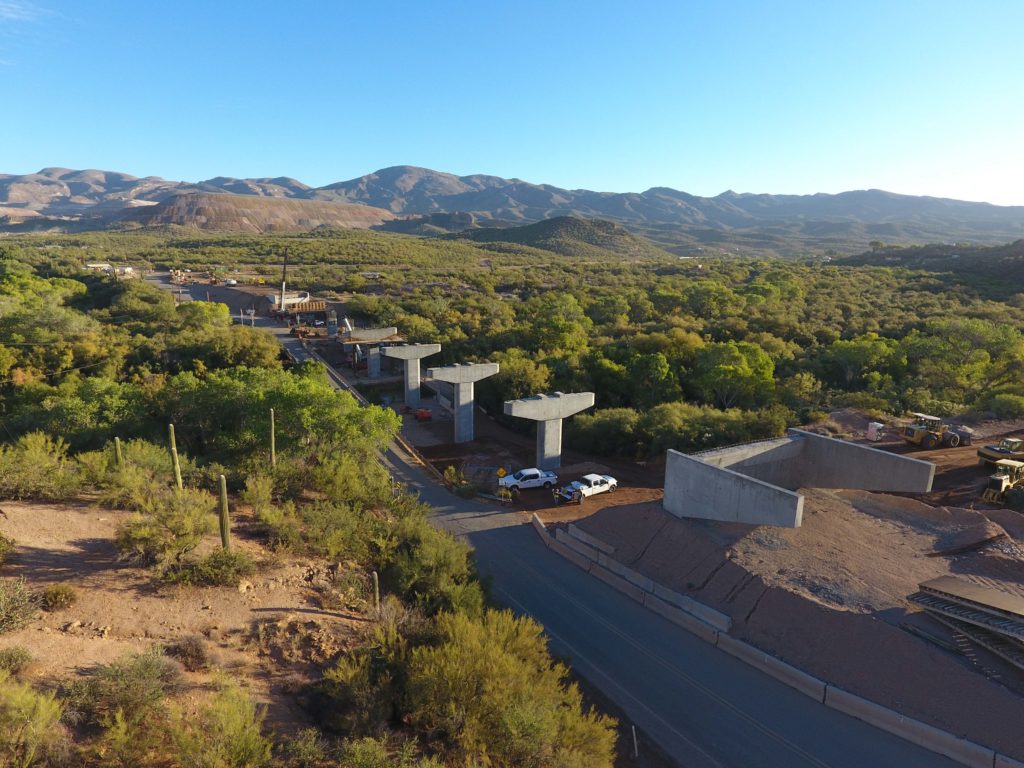
Conclusion
The project required over 16,000 cy of import material. Pulice located a source for this material adjacent to the project. This eliminated the need to truck haul 1,230 loads into the site thus reducing the impacts both to the environment and daily traffic.
On June 8, 2018, a dedication and the opening ceremony was held to commemorate the new structure. Many dignitaries, stakeholders and residents were in attendance for this important event. Pulice worked with Pinal County in staging this event by providing traffic control and personnel to help direct traffic.
The commitment of all involved from the early planning to the final opening ceremony was a joint effort that led to a successful project.

Together, from project development through construction, the Team successfully worked across multiple agencies and stakeholders in executing this unique and innovative project. Pulice won the AGC Build AZ Award for 2018.
![Bridge_9966-400×267[1]](https://www.pulice.com/wp-content/uploads/2020/06/Bridge_9966-400x2671-1.jpg)
Following more speeches and the ribbon-cutting ceremony, the first official car was allowed to cross the bridge. Jackie Mann and Stephani’s best friend Marcy Bryce-Mullin were chauffeured by L.S. “Jake” Jacobson, COO of Copper Basin Railway in his 1965 Mustang. Jake had been inspired by Stephani and had led fundraising campaigns for her medical treatment. In 2000, he named the bridge “The ‘Jake’ Jacobson Bridge of Unity in Memory of Stephani Yesenski”. He delivered the eulogy for Stephani at her funeral in 2000. She was 20 years old when she died.
The historic bridge is now a footbridge that connects to the Arizona Trail. It was built in 1916 and is one of eight historic bridges in Pinal County that are listed on the National Register of Historic Places.

